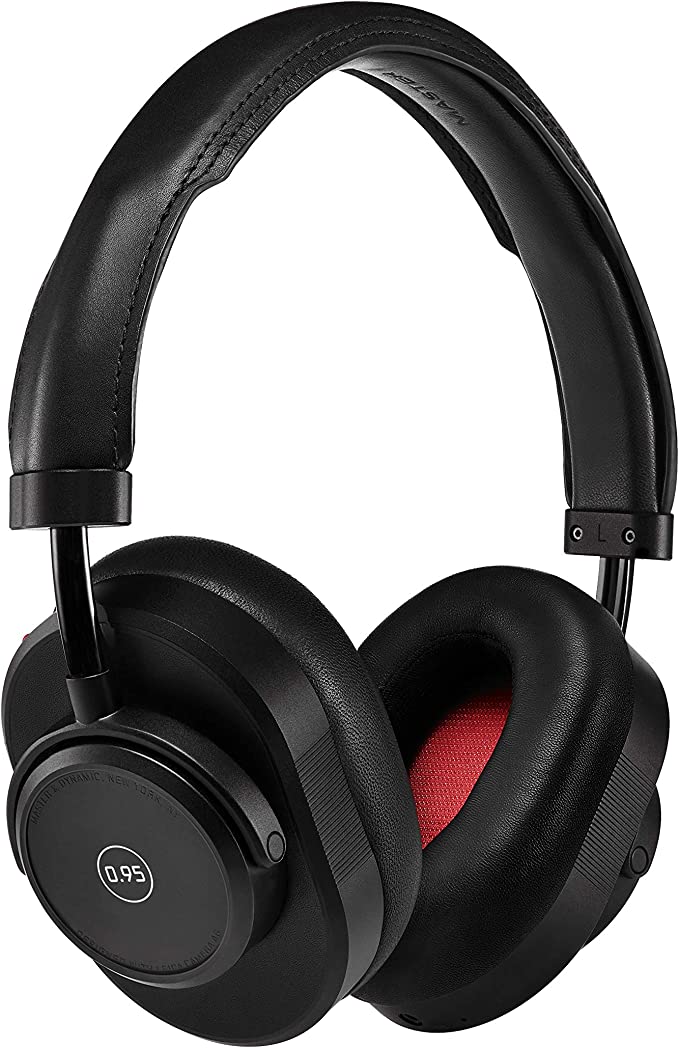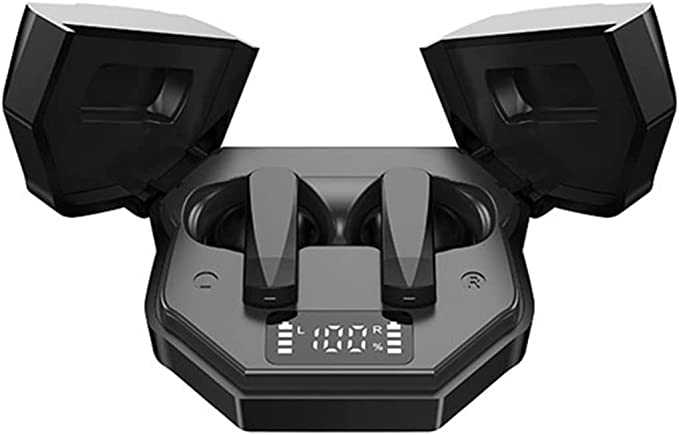Suomi G36 Wireless Earbuds : A Budget-Friendly Bluetooth Earbud That Packs a Punch
Update on June 22, 2025, 3:29 p.m.
Ever paused to consider the sheer technological wizardry packed into a pair of sub-$20 wireless earbuds? Take the Suomi G36, for instance. With a price tag that barely dents your lunch budget ($16.99 on sale, typically $19.99), they promise “Bluetooth 2023” (which we’ll interpret as current Bluetooth tech), a built-in microphone, LED digital display charging, and touch controls. It’s easy to dismiss such an offering as “you get what you pay for.” But what if we, as curious tech enthusiasts, decided to look a little closer? What if these unassuming earbuds could actually tell us a fascinating story about how far wireless audio technology has come, and how remarkably accessible it has become? Let’s embark on a little journey, using the Suomi G36 as our guide, to unpack the science that makes our untethered audio world sing.

Invisible Airwaves, Tangible Tunes: The Magic of Bluetooth 5.3
The Suomi G36 store page highlights “Bluetooth 5.3 technology,” boasting “superior sound quality and strong signal” with “no disconnection in listening music or making phone calls within 12 meters.” Now, for many, Bluetooth is just that invisible magic that connects their phone to their speakers or, in this case, earbuds. But not all Bluetooth is created equal. Think of Bluetooth versions like generations of a highly skilled data courier service. Each new iteration, standardized by the Bluetooth Special Interest Group (Bluetooth SIG), aims to make these couriers faster, more reliable, and more energy-efficient.
Bluetooth 5.3, one of the more recent standards, isn’t just a fancy number. It brings tangible benefits. For starters, it’s designed for more robust and stable connections. This means your music is less likely to stutter or drop out, even if your phone is in your pocket or across the room (up to that claimed 12 meters, or roughly 39 feet, in ideal conditions). This enhanced stability is partly due to improvements in how Bluetooth 5.3 devices handle channel classification, allowing them to better avoid crowded or interference-prone wireless channels. Imagine your data courier now has a smarter GPS, deftly navigating around wireless traffic jams.
Furthermore, Bluetooth 5.3 often contributes to better power efficiency. While the G36 product details don’t delve into the specifics of its power management, the underlying Bluetooth 5.3 architecture is built with Low Energy (LE) audio capabilities in mind, which can translate to longer listening times before needing a recharge – a crucial factor for tiny devices like earbuds. So, when Suomi claims “superior sound quality,” while Bluetooth 5.3 itself doesn’t inherently guarantee audiophile-grade sound (that’s more down to the audio codecs supported and the drivers themselves), it does provide a more stable and efficient pipeline for that audio data to travel, which is a fundamental prerequisite for a good listening experience.

The Little Giants in Your Ears: How 6mm Drivers Make Big Sound
Nestled within each G36 earbud is a “6mm diameter speaker.” In the audio world, we call this a driver – it’s the tiny engine that converts electrical signals from your phone into the sound waves that your ears perceive. Most commonly in earbuds like these, we’re talking about dynamic drivers. Picture a miniature version of a traditional loudspeaker: there’s a diaphragm (a thin membrane), a voice coil attached to it, and a magnet. When an electrical audio signal passes through the voice coil, it creates a fluctuating magnetic field that interacts with the permanent magnet, causing the coil and the attached diaphragm to vibrate rapidly. These vibrations push and pull the air, creating sound waves.
Now, a 6mm driver is quite small. Yet, Suomi claims it “presents a powerful and wide sound range, which makes the treble full of dynamics, and the bass powerful.” How can such a tiny component achieve this? It’s a marvel of micro-engineering. The material of the diaphragm, the strength of the magnet, and the precision of the voice coil all play critical roles. Engineers work to tune these elements to produce a balanced sound across different frequencies. Getting “powerful bass” from a small driver often involves clever acoustic design within the earbud housing to enhance low-frequency response. “Dynamic treble” suggests the driver can respond quickly and accurately to high-frequency signals, making instruments like cymbals or high-pitched vocals sound crisp and clear.
However, the perceived quality of sound from any in-ear headphone is massively influenced by something often overlooked: the fit. The Suomi G36 comes with “4 different types of silicone eartips.” This isn’t just for comfort; it’s critical for acoustics. A snug, airtight seal between the eartip and your ear canal does two vital things. Firstly, it provides passive noise isolation – physically blocking out some of the ambient sounds from your environment, allowing you to focus on your music without cranking up the volume to dangerous levels. Secondly, and perhaps more importantly for bass response, a good seal creates a closed acoustic chamber. This allows those low-frequency waves generated by the driver to be effectively channeled into your ear, making the bass feel richer and more impactful. Without a good seal, bass frequencies tend to leak out, leaving the music sounding thin and tinny. So, experimenting with those different eartip sizes is a crucial first step to getting the best out of the G36’s 6mm drivers.

Pocket-Sized Powerhouses: The Science of All-Day (and All-Week) Listening
Wireless freedom is fantastic until your earbuds die mid-song. The Suomi G36 tackles this with a dual battery system. Each earbud contains a 55mAh (milliampere-hour) battery, which Suomi states will last for “4.5 hours for normal use (60% volume).” The charging “bin” or case, however, packs a much larger 1200mAh capacity. This is where the real endurance comes in. The case doesn’t just store your earbuds; it acts as a portable power bank, recharging them multiple times. The product description even claims “the charging bin lasts 120 hours” and offers “Up to 180H Playtime with charging case.”
Let’s quickly demystify “mAh.” It’s a measure of electric charge, indicating how much current a battery can deliver over a certain period. A higher mAh generally means a longer potential runtime, though actual battery life also depends on the device’s power consumption. The earbuds themselves, being small, have modest 55mAh batteries, perfectly understandable. The 4.5-hour playback is fairly standard for budget earbuds. The real star here is the 1200mAh case. This substantial capacity means you could potentially go for days, or even weeks depending on your usage, without needing to plug the case itself into a wall charger. For someone who commutes, travels, or simply forgets to charge things regularly, this extended “off-grid” playtime is a significant convenience. The case effectively serves as an energy reservoir, topping up the earbuds whenever they’re docked. Modern earbuds, including presumably the G36, use Lithium-ion (Li-ion) or Lithium-polymer (Li-poly) batteries, chosen for their high energy density (a lot of power in a small package) and decent lifespan.

Ears, Meet Ergonomics: The Art and Science of a Comfortable, Controllable Fit
Beyond the internal tech, how an earbud interacts with your physical ear is paramount. Suomi emphasizes the G36’s “ergonomic in-ear design” that “fits in each ear and comes with 4 different types of silicone eartips to fit any different ear profiles for a comfortable wearing experience.” This isn’t just marketing fluff; it’s rooted in the science of ergonomics – designing products to optimize human well-being and overall system performance. A poorly fitting earbud can cause discomfort, pain, or constantly fall out, rendering even the best audio technology useless. The provision of multiple eartip sizes acknowledges the vast diversity in human ear canal shapes and sizes. Finding that “just right” fit, as mentioned earlier, also dramatically improves passive noise isolation and sound fidelity.
Then there’s the “Smart touch control.” The G36 “supports dual ear touch control, providing convenient operation on volume control, previous/next song, pause and answer calls along as well as voice assistant control.” Instead of tiny, fiddly physical buttons, many modern earbuds use capacitive touch sensors. These sensors detect the change in electrical capacitance caused by the touch of your finger (your body has a natural capacitance). This allows for a sleeker design and, ideally, more intuitive control. With a few taps or swipes, you can manage your audio and calls without constantly fishing your phone out of your pocket – a genuine convenience, especially when you’re on the move, exercising, or have your hands full.

The Value Equation: When Affordability Meets Modern Tech
So, we have Bluetooth 5.3, custom-fit eartips for 6mm drivers, impressive battery longevity via a high-capacity case, and touch controls – all in a package that retails for under $20. This is where the Suomi G36 truly enters the conversation about technology democratization. Features that were once a premium are now trickling down to even the most budget-friendly devices.
It’s important to approach user feedback for such products with a nuanced perspective. The Suomi G36 has a customer review score of “3.4 out of 5 stars” based on a mere “2 ratings.” This sample size is incredibly small, making it statistically insignificant for drawing broad conclusions. However, the distribution is interesting: “5 star 47%” and “2 star 53%.” This polarization suggests that the two individuals who left reviews had vastly different experiences. The detailed 5-star review, from a “Verified Purchase,” praised the “perfect fit,” ease of pairing, sound quality “ideal for their price range,” and clear phone calls. This user explicitly stated, “While these earbuds aren’t the most advanced, they still deliver on their promise,” and found the exceptional fit compensated for the lack of active noise cancelling. This highlights that for some users, getting the fundamentals right (fit, basic connectivity, decent sound for the price) is a win. The 2-star rating, unfortunately, lacks a detailed review in the provided text, so we can only speculate on the dissatisfaction.
This brings us to the core question of value. For $17, one cannot expect the refined audio signature of a $200 pair of earbuds, nor advanced features like class-leading Active Noise Cancellation (ANC) or multi-device pairing. However, the Suomi G36 appears to aim for solid foundational performance: reliable wireless connection, long playtime, customizable fit, and convenient controls. For many users – students, those needing a backup pair, or individuals whose audio needs are primarily for casual listening, podcasts, or calls – this feature set might be more than “good enough”; it might represent excellent value.
Beyond the Buds: Final Thoughts on Our Wireless World
The Suomi G36 wireless earbuds, unassuming as they may be, serve as a fascinating microcosm of the broader trends in consumer technology. They demonstrate how sophisticated features like Bluetooth 5.3 and extended battery life are becoming increasingly standard, even at the entry level. This relentless march of technological advancement and miniaturization is what allows us to enjoy such conveniences at progressively lower price points.
While we’ve explored the science and specifications advertised by Suomi, it’s always wise to remember that real-world performance can vary. Factors like the specific phone or device paired with, the wireless environment, and even individual ear anatomy can influence the experience. However, by understanding the basic principles behind the technology – how Bluetooth works, what a driver does, why battery capacity matters, and the importance of a good fit – you, as a consumer, are better equipped. You can move beyond marketing jargon and make informed decisions based on what truly matters for your needs and budget.
The journey of personal audio is far from over. We’ll continue to see advancements in wireless codecs for even higher fidelity sound, more intelligent noise cancellation, seamless integration with our digital lives, and perhaps even biometric sensing capabilities built into our earwear. But for now, products like the Suomi G36 remind us that enjoying the freedom of wireless sound doesn’t necessarily require breaking the bank. Sometimes, the most impressive technology is the kind that quietly works, making our daily lives just a little bit easier and more enjoyable, all for the price of a few cups of coffee. And that, in itself, is a pretty remarkable feat of science and engineering.



























































